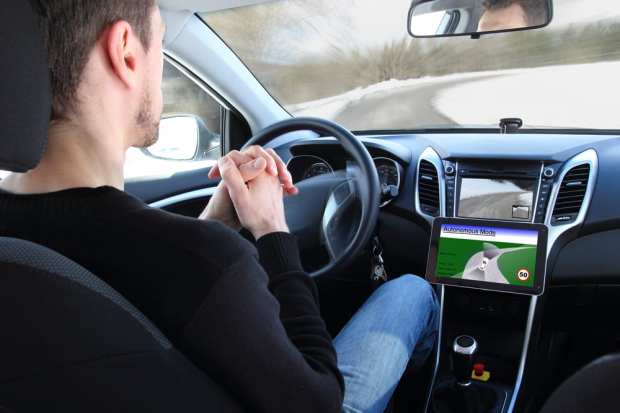Boeing Crash Chills Consumer Interest In Self-Driving Cars

There comes a point with new technology when the ideal – the science fiction or research paper’s promise of a new device – starts to tilt heavily toward reality, and that’s what happening now with autonomous vehicles. New tests and partnerships are regularly announced – in this case, for consumer use on roads and highways, and/or retail and grocery delivery – and healthy skepticism about the new technology softens a bit into less-than-cautious optimism, especially as revenue and other business projections gain fresh clarity, and potential models and use cases emerge.
But movement is rarely linear, and there’s usually some unexpected backward motion, some reconsideration. That’s happening now, too, with the concept of self-driving cars and trucks. The source? Recent woes within the airline industry.
Crashes involving Boeing’s 737 Max aircraft are having a deep global impact in a variety of areas, one of which is autonomous vehicles. According to a report on Tuesday (April 2) in the Financial Times, Daimler CEO Dieter Zetsche views the crashes as a warning of rushing self-driving technology too quickly to market. The warning comes weeks after news broke about Daimler and BMW partnering on self-driving automotive technology, with the two companies saying they would zero in on development of “next-generation technologies” like cars without drivers operating on highways, parking features and assistance systems for drivers.
The worry, according to Zetsche (and, frankly, more than a few other observers)?
That crashes involving self-driving vehicles – or, as he put it, “one spectacular crash” – might turn public opinion against the technology, which could, of course, have severe impacts on the profit motivations driving research into autonomous cars and trucks. Such a view worries that the incentives driving the technology to market could lead to substandard technology and direct or indirect safety shortcuts for those vehicles.
In fact, PYMNTS research has documented a significant reluctance among consumers to embrace autonomous vehicles. That reluctance exists alongside the general enthusiasm shown for less advanced “connected car” technology – which requires the participation of drivers – and the commerce opportunities it offers.
According to the PYMNTS/Visa Digital Drive report, only about 14 percent of consumers are “extremely interested” in owning or using an autonomous car, with about 21 percent saying they are “very interested,” and 23 percent “somewhat interested.”
Every weekday morning, 135 million U.S. adults drive a car to work, with commutes ranging from as little as 15 minutes to over an hour, PYMNTS research shows. During this daily grind, motorists are driving $212 billion in commerce as they drive to and from their workplaces and homes. That’s a huge opportunity for the emerging technology of automobiles.
Indeed, autonomous and self-driving vehicles are among the most highly anticipated developments in the automotive industry – the stuff of science fiction and futurism for a good solid century.
Not only could this technology dramatically change the way consumers and motorists think about driving and mobility, it could also significantly increase the rate of purchases made during the daily commute. According to PYMNTS findings, over 75 percent of smartphone users who spend more than 30 minutes in traffic traveling to and from work would order ahead more often if their vehicles were both autonomous and connected.
But for that to happen with autonomous vehicles, people will not only have to feel safe, research indicates, but will have to accept what amounts to a change of culture centered around the automobile – easily one of the main cultural and economic factors in modern consumer life, especially in the U.S.
Polls show that senior citizens – a group that includes increasing amounts of retired Baby Boomers – are extremely anxious and skeptical about self-driving vehicles, even though they could serve to help such consumers get around when they are no longer able to drive themselves. And AAA found that 73 percent of U.S. drivers are afraid to use autonomous vehicles, with 63 percent unwilling to share a road with them because of safety concerns, bolstering the point made by Zetsche and others.
So, what’s that all mean?
It’s unlikely that the drive toward the autonomous future is going to slow down, not with all the big players, big money and well-funded startups involved, and potentially long-term partnerships being formed around the emerging technology. But it also seems likely those concerns about safety – whether increased by airplane crashes or not – will not go away anytime soon.
